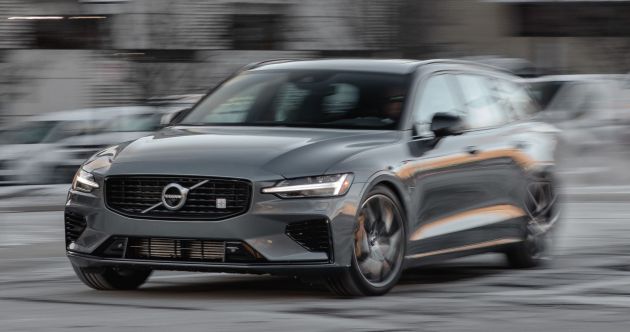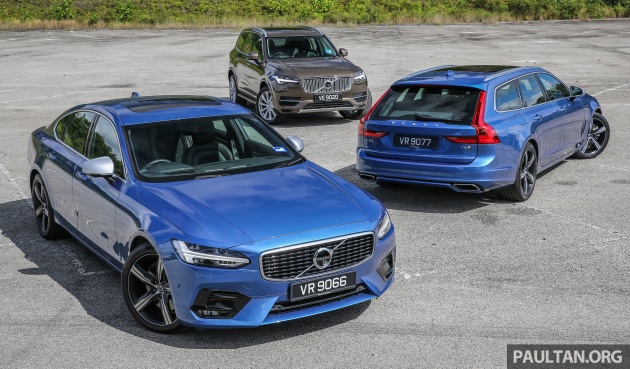OPINION: 180 km/h speed cap – is it a good move?
If it’s one thing to note about mankind, it is its ability to resist change. When it comes down to it, the more controversial the adjustments, the stronger the resistance. Like a bad breakup, if you will.
A little over a year ago, Volvo revealed its plans to implement a 180 km/h electronic speed limiter on all its new vehicles, a move spurred by the automaker’s Vision 2020 commitment, otherwise known as the “zero fatality” pledge that it announced in 2016. The plan had been in the pipeline since 2007, and like most grand ambitions, many doubted its achievability.
At the time, Volvo’s senior technical safety advisor Jan Ivarsson said there was a lot of fuss about Vision 2020 in the beginning, especially with regards to the execution. “But we needed to refresh our leadership – being number one over the years, you need to do something different,” he said. After all, you’ve got to be bold for the change you want to see in this world, right?
Well, just recently, the Geely-owned Swedish brand gave the 180 km/h speed cap the green light. This means every new Volvo car now maxes out at 180 km/h, plus an added Care Key for drivers to impose additional restrictions. Other carmakers also have their versions of Care Key, such as the Ford MyKey, but the real takeaway here is the electronic speed restriction.
Some netizens have voiced their disagreements over the move, while others questioned if carmakers have the right to impose such limitations. There were also jokes that these new Volvos can and will be overtaken by Perodua Myvis on the highways.
However, lest we forget, some JDM cars like the Mitsubishi Evo and Nissan GT-R also get the 180 km/h speed cut as standard. This limit was mandated by the Japan Automobile Manufacturers Association for safety reasons, although some performance cars come with a limiter deactivator for track use.
Realistically, nobody should be driving at such high speeds on public roads, even if you think you possess the driving prowess of Lewis Hamilton (or drive something like a bulletproof Humvee). Research has shown that people have a poor understanding of the dangers associated with speeding.
Sure, going fast on a long and empty stretch of road is easy, but if something abruptly gives (like a blown tyre or an animal suddenly darting in front of your vehicle), most people would have trouble adapting. Think about it, how many live to tell the tale?
According to the US National Highway Traffic Safety Administration (NHTSA), speeding has accounted for approximately one-third of all motor vehicle fatalities for more than 20 years, and millions of motorists are slapped with speeding tickets every year.
It goes without saying that speeding is against the law in most countries. Some of the most advanced motorways in the world have speed limits, but none are even close to 180 km/h, much less Malaysian roads.
For example, certain sections of Poland’s Autostrada A2 have a top speed of 140 km/h, which is among the highest permitted limit in the world. Contrary to popular belief, only a quarter of German’s famous autobahn (it is 12,875 km-long, collectively) is open to unlimited speed.
Most of the time, the autobahn employs a dynamic speed limit system (with strict enforcement by the Autobahnpolizei), which can be raised or lowered depending on weather and traffic conditions.
Meanwhile, on the automakers’ part, many high-performance cars which are homologated for road use have their top speeds restricted to 250 km/h, or 280 km/h in some cases. As the maker of the “safest cars in the world,” Volvo said it feels obligated to continue the tradition of being a pioneer in this field, even if it means losing potential customers.
Whether you choose to poke fun, belittle or boycott the brand altogether, it is decisions like these that will go on to save thousands of lives, especially in the era of high-powered cars. Volvo itself makes plug-in hybrid cars with over 400 hp, and despite being loaded with the most advanced safety systems, few things can negate the devastating effects of inertia, even if Volvo itself provided the groundbreaking solution (which has saved over a million lives) to this.
Perhaps in the next few years, Volvo won’t be the only carmaker to introduce the lower speed limit. Being a pioneer means being at the forefront of the industry, leading and implementing change in the hopes that others will follow. People may be resistant in the beginning, but as time has shown, change is almost inevitable. How often do we drive at 180 km/h anyway?
For all of us at paultan.org, we feel that 180 km/h is plenty fast enough, and going that fast on Malaysian public roads is dangerous and downright irresponsible. To most drivers, having a limited top speed of 180 km/h is exactly the same as the previous electronically-limited 250 km/h V-max set on most high performance cars – in just about every case, you won’t go anywhere near it, so why make a big fuss?
The post OPINION: 180 km/h speed cap – is it a good move? appeared first on Paul Tan's Automotive News.
from Paul Tan's Automotive News
Read The Rest:paultan...






Post a Comment